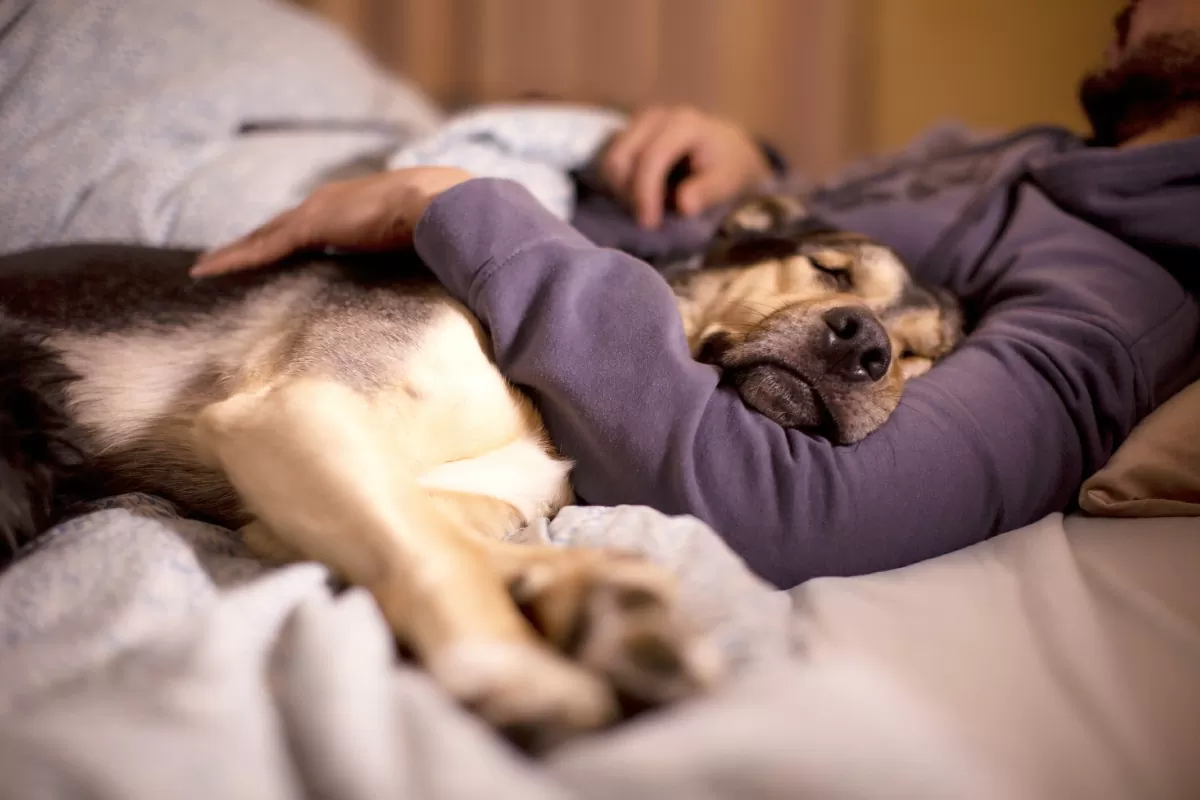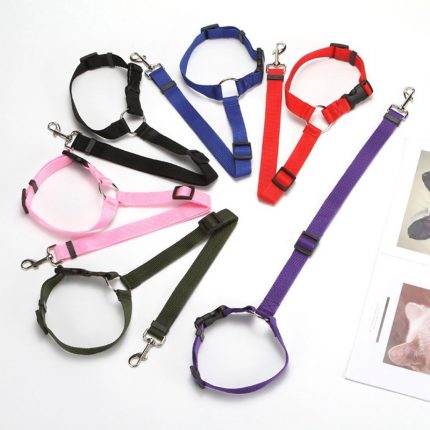Why Are Dogs So Clingy: Exploring the Bond Between Dogs and Their Owners
Dogs have long been regarded as man’s best friend, and for good reason. These loyal and affectionate creatures have an innate ability to form deep emotional connections with their human counterparts. One common characteristic that many dog owners can attest to is their dog’s tendency to be clingy. Whether it’s following us around the house, constantly seeking attention, or displaying separation anxiety when we’re away, dogs often exhibit behavior that can be interpreted as clinginess. But why do dogs behave this way? What drives their need for constant companionship and affection?
The bond between dogs and humans dates back thousands of years, originating from the domestication of wolves. Over time, dogs have evolved to become highly attuned to human emotions and behaviors. They have developed an uncanny ability to read our facial expressions, body language, and even our scent, allowing them to understand our moods and respond accordingly. This deep level of understanding creates a strong sense of empathy and attachment between dogs and their owners.
Furthermore, dogs are social animals by nature. In the wild, they live in packs and rely on each other for survival. This instinctual need for social interaction and companionship is ingrained in their DNA. When dogs become part of our families, we become their new pack. They look to us for guidance, protection, and companionship. Their clinginess can be seen as a way of seeking reassurance and security from their pack leader.

Another factor contributing to a dog’s clingy behavior is their inherent desire for love and attention. Dogs thrive on human interaction and affection. They crave our touch, praise, and companionship. When they display clinginess, it is often a way of seeking validation and reassurance that they are loved and cared for. Dogs are incredibly perceptive and can pick up on subtle changes in our behavior or routines. If they sense a shift in our attention or availability, they may become clingy as a means of trying to regain our focus and affection.
It’s important to note that not all dogs are clingy in the same way. Some breeds are naturally more independent and may not exhibit as much clingy behavior, while others are known for their need for constant attention. Additionally, a dog’s individual personality, past experiences, and training can also influence their level of clinginess.
In conclusion, dogs are clingy because of their deep emotional bond with their owners, their instinctual need for social interaction, and their desire for love and attention. Understanding the reasons behind their clinginess can help us foster a healthier and more fulfilling relationship with our furry companions. In the next section, we will explore practical recommendations for managing and addressing clingy behavior in dogs.
The Psychology Behind Dogs’ Clingy Behavior
1. Attachment and Emotional Bond
One of the primary reasons why dogs exhibit clingy behavior is their strong attachment and emotional bond with their owners. Dogs have an incredible ability to form deep emotional connections, often viewing their owners as their primary source of security and comfort. This attachment is built over time through consistent care, love, and positive interactions.
Research suggests that dogs’ attachment styles closely resemble those of human infants. They can develop secure, anxious, or avoidant attachment patterns. Dogs with secure attachment feel confident and comfortable in their owners’ presence, while those with anxious attachment may display clingy behavior as a result of fear or insecurity. Dogs with avoidant attachment, on the other hand, may appear more independent and less clingy.
2. Separation Anxiety
Separation anxiety is another common reason for clingy behavior in dogs. Dogs are highly social animals and thrive on companionship. When they become overly dependent on their owners, they can experience anxiety and distress when separated. This can manifest as excessive barking, destructive behavior, or even physical symptoms like pacing or drooling.
Separation anxiety can be triggered by various factors, including changes in routine, traumatic experiences, or a lack of proper socialization. It’s important to address separation anxiety with patience and understanding, using techniques such as gradual desensitization, providing mental stimulation, and seeking professional help if needed.
3. Breed Traits and Temperament
Different dog breeds have varying levels of clinginess due to their inherent traits and temperament. Some breeds, such as Labrador Retrievers and Golden Retrievers, are known for their friendly and affectionate nature, often displaying clingy behavior as they seek constant interaction and attention. On the other hand, breeds like Basenjis or Afghan Hounds are more independent and may exhibit less clinginess.
Understanding your dog’s breed characteristics can help you better comprehend their behavior and adapt your interactions accordingly. However, it’s important to remember that individual personality and upbringing also play significant roles in a dog’s clinginess.
4. Environmental Factors
Environmental factors can also contribute to a dog’s clingy behavior. Dogs are highly perceptive and can sense changes in their environment or their owners’ emotional state. Major life events, such as moving to a new home, the arrival of a new family member, or the loss of a loved one, can trigger clingy behavior in dogs as they seek reassurance and stability.
Consistency, routine, and providing a safe and secure environment can help alleviate clinginess caused by environmental factors. Giving your dog a designated space, providing plenty of mental and physical stimulation, and maintaining a predictable schedule can help them feel more secure and reduce clingy behavior.
Practical Recommendations for Managing Clingy Behavior
1. Establish a Routine
Creating a consistent daily routine for your dog can help them feel more secure and less reliant on constant attention. Set regular feeding times, exercise schedules, and designated quiet times for rest. This predictability can provide a sense of stability and reduce clingy behavior.
2. Encourage Independence
While it’s important to provide love and attention to your dog, it’s equally important to encourage their independence. Gradually introduce activities that promote self-reliance, such as puzzle toys or interactive games that keep them occupied when you’re not available. This helps them develop confidence and reduces their need for constant attention.
3. Positive Reinforcement Training
Using positive reinforcement techniques, such as rewarding desired behaviors and ignoring clingy behavior, can help modify your dog’s behavior. Reinforce moments of independence and calm behavior with treats, praise, and affection. Redirect their attention to appropriate activities when they become clingy, rewarding them for engaging in those activities instead.
4. Seek Professional Help
If your dog’s clingy behavior becomes excessive or unmanageable, it may be beneficial to seek guidance from a professional dog trainer or animal behaviorist. They can assess the underlying causes of the clinginess and provide tailored strategies to address the issue effectively.

Conclusions
In conclusion, understanding why dogs exhibit clingy behavior is essential for fostering a healthy and happy relationship between you and your furry companion. For more insights on this topic, consider exploring Why Are Dogs So Clingy on Geepets.com. This resource delves deeper into the psychological and environmental factors that contribute to clinginess in dogs, offering practical advice for managing and alleviating these behaviors.
Additionally, for a broader perspective on canine behavior and how to address various issues, the American Kennel Club (AKC) at akc.org provides a wealth of information on dog care, training tips, and behavioral insights, making it an invaluable resource for any dog owner seeking to understand and improve their pet’s well-being.
Practical Recommendations for Managing Clingy Behavior in Dogs
1. Establish a Consistent Routine
Creating a structured daily routine for your dog can help them feel more secure and less reliant on constant attention. Set regular feeding times, exercise schedules, and designated quiet times for rest. Consistency provides a sense of stability and predictability, which can reduce clingy behavior.
2. Encourage Independence through Interactive Toys
Provide your dog with interactive toys and puzzles that engage their minds and keep them occupied when you’re not available. These toys can stimulate their natural instincts and provide mental stimulation, helping them develop independence and reducing clingy behavior. Rotate the toys regularly to keep them interesting and engaging.
3. Gradual Desensitization to Alone Time
If your dog experiences separation anxiety or becomes excessively clingy when you’re away, leading you to wonder, “Why are dogs so clingy?”, it’s important to gradually desensitize them to being alone. The question of “Why are dogs so clingy?” can often be attributed to their pack animal nature, seeking constant companionship and security from their pack, in this case, you. To address the concern of “Why are dogs so clingy?”, start by leaving them alone for short periods and gradually increase the duration over time. This method helps in understanding the root of “Why are dogs so clingy?” by addressing their anxiety and dependence directly.
Use positive reinforcement by rewarding calm behavior, which is a direct counteraction to the question, “Why are dogs so clingy?”. Providing treats or toys to keep them occupied during your absence not only helps in distracting them but also in reinforcing independent play, slowly answering the question of “Why are dogs so clingy?” by encouraging more self-reliant behavior. By tackling the issue head-on and asking, “Why are dogs so clingy?”, you can implement effective strategies to help your dog become more comfortable with being alone, turning the clingy behavior into confidence and security in their own company.
4. Create a Safe and Comfortable Space
Designate a specific area in your home where your dog can retreat to when they need some alone time, especially if you’re pondering over the question, “Why are dogs so clingy?” This could be a cozy corner with their bed, blankets, and toys. Make sure the space is comfortable, quiet, and free from distractions, addressing the underlying query of “Why are dogs so clingy?” by providing them with a safe haven.
Encourage your dog to use this space by rewarding them when they choose to relax there, which can be an effective strategy in understanding and mitigating the reasons behind the question, “Why are dogs so clingy?” This approach not only offers them a designated area to unwind but also subtly addresses the concern of “Why are dogs so clingy?” by teaching them to find comfort and security in their own company.
5. Positive Reinforcement Training
To address the question of “Why Are Dogs So Clingy,” it’s essential to understand the balance between encouraging desired behaviors and discouraging overly dependent ones. Utilizing positive reinforcement techniques is crucial in this process. When pondering “Why Are Dogs So Clingy,” consider rewarding moments of independence and calmness with treats, praise, and affection. This approach not only answers the question of “Why Are Dogs So Clingy” but also promotes a healthy balance of attachment and autonomy in your pet.
In situations where you might ask yourself, “Why Are Dogs So Clingy,” redirecting their attention to appropriate activities when they become overly attached is a beneficial strategy. Rewarding them for engaging in these activities instead can help mitigate clingy behavior. This method directly addresses the concern of “Why Are Dogs So Clingy” by fostering independence in your dog.
Consistency and patience are key in reinforcing positive behaviors, especially when dealing with the issue of “Why Are Dogs So Clingy.” It’s important to consistently apply these positive reinforcement techniques to encourage independence, ensuring that the question of “Why Are Dogs So Clingy” is met with constructive, loving responses that promote a healthy, balanced relationship between you and your dog.
6. Seek Professional Help if Needed
If you’re wondering, “Why are dogs so clingy?” and your dog’s clingy behavior persists or becomes unmanageable, it may be beneficial to seek guidance from a professional dog trainer or animal behaviorist. They are well-equipped to assess the underlying causes of the clinginess, which could provide insights into the question of “Why are dogs so clingy?” Furthermore, they can offer tailored strategies to address the issue effectively, considering the unique reasons behind “Why are dogs so clingy?” in your particular case.

They may recommend specific training techniques or therapies to help your dog overcome their clingy behavior, directly tackling the root of “Why are dogs so clingy?” This professional advice can be invaluable in understanding and mitigating the factors contributing to your dog’s behavior, ultimately providing both you and your dog with relief from the challenges associated with the question of “Why are dogs so clingy?”
7. Provide Physical and Mental Stimulation
Ensuring your dog receives plenty of physical exercise and mental stimulation throughout the day is crucial. Regular walks, playtime, and interactive games can help burn off excess energy and keep their minds engaged. A tired and mentally stimulated dog is less likely to exhibit clingy behavior as they are fulfilled and content. This approach addresses the question of why are dogs so clingy by providing them with a structured outlet for their energy and curiosity.
Our featured products:
The reason why are dogs so clingy often stems from a lack of physical and mental stimulation. By incorporating a variety of activities into your dog’s routine, you directly tackle the underlying cause of why are dogs so clingy. Engaging in these practices not only enhances their overall well-being but also helps in understanding and mitigating the reasons why are dogs so clingy, ensuring they are both physically and mentally satisfied.
8. Avoid Reinforcing Clingy Behavior
While it’s important to provide love and attention to your dog, be mindful of inadvertently reinforcing clingy behavior. Avoid giving in to excessive demands for attention or affection, as this can reinforce the clinginess. Instead, reward calm and independent behavior, gradually teaching your dog that seeking attention is not the only way to receive love and care.
By implementing these practical recommendations, you can help manage and address clingy behavior in your dog. Remember to be patient, consistent, and understanding throughout the process. Building a balanced and fulfilling relationship with your furry companion is a journey that requires time, effort, and a deep understanding of their needs.















